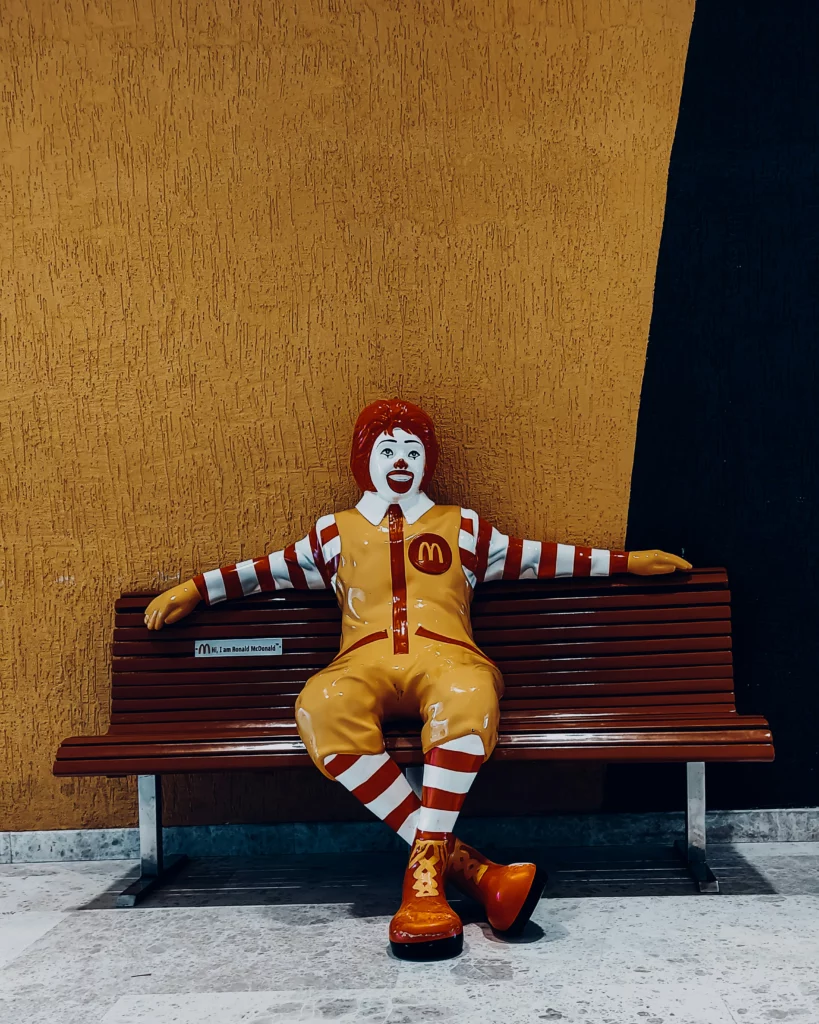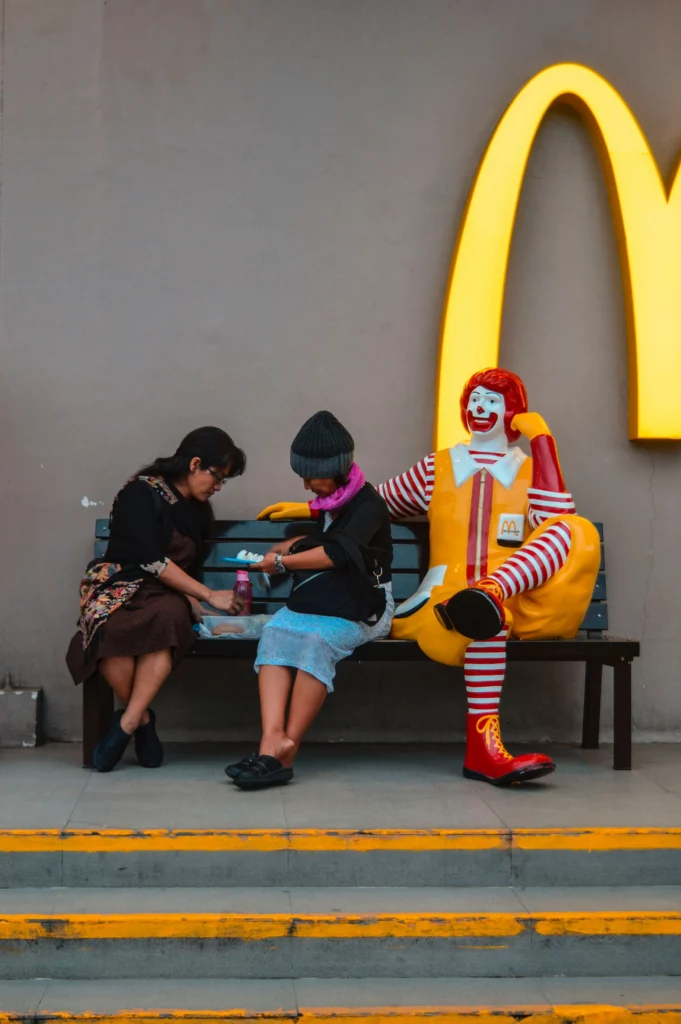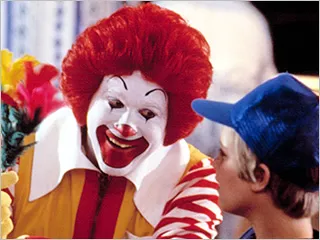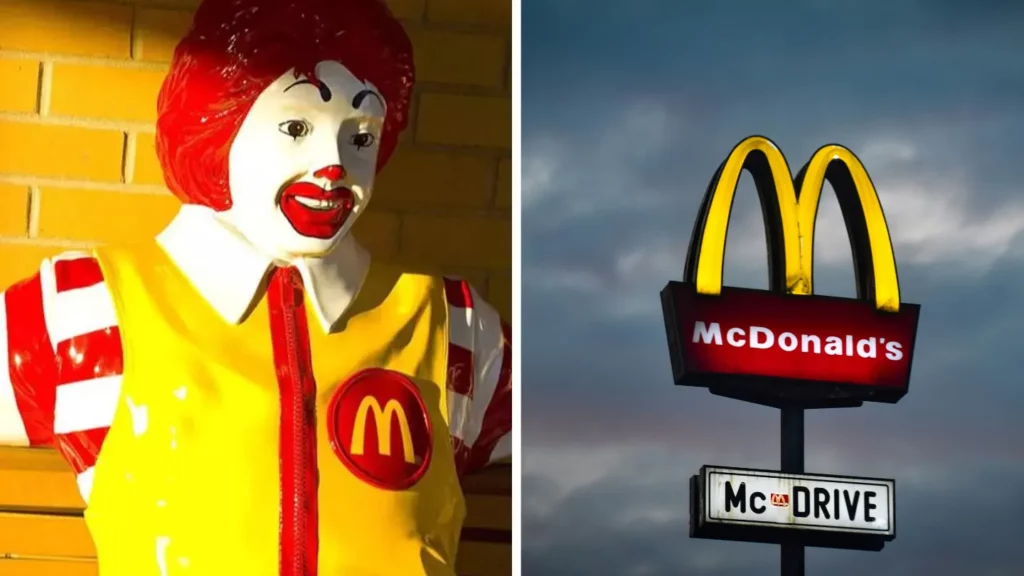Ronald McDonald brings back nostalgic memories of childhood happy meals and trips to McDonald’s. The clown’s vibrant red wig, white-painted face, and yellow boiler suit stood out as symbols just as recognizable as the golden arches.
Emerging in the 1960s, Ronald swiftly captured the hearts of many. At a glance, he was well-known worldwide.
In recent years, an unusual development has occurred Ronald McDonald has seemingly disappeared. His once-constant presence in promotions, gatherings, and dining establishments has subtly faded away.

His absence was initially overlooked, but it has become harder to ignore. Ronald McDonald, an iconic character in popular culture for many years, seems to have vanished from the spotlight.
What’s the latest on the iconic mascot? The response is significantly more unsettling than one could anticipate.
Before his understated exit, Ronald McDonald represented more than just a character; he embodied joy, nostalgia, and the carefree spirit of childhood. He represented McDonald’s, frequently seen at promotional events and restaurant inaugurations.
Ronald McDonald has been associated with charitable endeavors like the Ronald McDonald House Charities. These organizations continue to offer essential assistance to families dealing with ill or injured children.
Grimace, the Hamburglar, Birdie the Early Bird, and Mayor McCheese are just a few of the iconic figures who have accompanied Ronald over the years. The characters brought to life an entire realm filled with joy and imagination, famously recognized as McDonaldland.
These characters played a crucial role in engaging younger audiences for McDonald’s. A trip to the fast-food giant transformed into something beyond mere dining—it became an experience.
Ronald’s joyful personality and funloving behavior endeared him to kids everywhere. He left an indelible mark on the childhoods of countless individuals.
In light of Ronald’s significant cultural influence, it appears that his popularity has started to diminish. McDonald’s has adjusted its marketing approaches to better resonate with an adult audience.
However, this wasn’t the sole factor contributing to Ronald’s gradual disappearance from public view. In the shadows, a startling and unsettling pattern was swiftly emerging.
We can link the troubling trend on social media to the underlying cause of Ronald McDonald’s subtle exit. This event captured global attention in 2016.
As autumn drew near that year, a phenomenon of “creepy clown sightings” started to emerge worldwide. What began as a lighthearted joke took a surprising turn and intensified rapidly.

The people put on creepy clown costumes and emerged from several public locations. These incidents spanned various neighborhoods and schools, leading to widespread panic and fear.
The situation escalated quickly and became unmanageable. A seemingly harmless prank escalated into a frightening situation as individuals donned clown masks and instilled fear in unsuspecting passersby.
Reports have emerged from the United States, Canada, Australia, and the United Kingdom. Reports have emerged indicating that individuals in clown costumes have been making threats towards children and, in some instances, pursuing them.
A group of 20 people wearing clown masks confronted a family in Florida, setting off a shocking incident. A report from the UK indicates that an individual wearing a clown mask reportedly threatened a boy with a knife while he was on his way to school.
The release of the horror film “It,” which is an adaptation of Stephen King’s novel, marked the beginning of this trend. Another catalyst was the short film “Gags”.
What started as a promotional effort for these films rapidly turned into a widespread sensation. The fear regarding clowns grew so pronounced that even experienced actors wearing clown outfits faced rejection.
In a swift turn of events, clowns, previously linked to joyful childhood memories, transformed into figures of fear. The perception of the clown underwent a significant transformation, leading to a decline in its once lighthearted reputation.
Ronald McDonald, recognized globally as the iconic clown, was not exempt from this shift in public perception. The concerning shift in public opinion compelled McDonald’s to address it.
In 2016, the fast-food giant started to gradually reduce Ronald McDonald’s presence in its marketing and public events. The move was understated, yet it was evident that McDonald’s was stepping away from its legendary mascot.

The organization issued a statement recognizing the trend and its effects. It said, “McDonald’s and franchisees in the local markets are mindful of the current climate around clown sightings in communities and, as such are being thoughtful in respect to Ronald McDonald’s participation in community events for the time being.”
Ronald McDonald has stepped back from his role as the iconic figure representing McDonald’s. He had become a potential risk to society.
Although McDonald’s has not formally announced the retirement of the mascot, Ronald’s visibility in public events has notably diminished. Even the McDonald’s UK website subtly acknowledged his reduced position.
The site mentioned, “We’re afraid that Ronald McDonald no longer appears in McDonald’s UK advertising. But he is still very busy working for us.”
It added, “He often travels up and down the country to help promote some of our exciting new activities and visits our restaurants to make sure everyone is enjoying their meals.”
The decision to move away from the mascot, despite Ronald McDonald’s reduced presence in promotions, directly stems from the widespread panic surrounding clowns. During that time, this frenzy captivated the world.
The decline of Ronald McDonald highlights the rapid shifts in how the public views figures and brands. A once friendly and lighthearted figure has now succumbed to a troubling viral trend.
Although Ronald continues to be a part of McDonald’s corporate identity, it is evident that his role as the company’s primary representative has come to an end. Despite his diminishing visibility, Ronald’s impact continues through the Ronald McDonald House Charities.
These charities highlight his significant influence on families facing challenges. Although Ronald McDonald may have faded from commercials and public appearances, his legacy continues to endure.

Ronald McDonald has shifted his image to one that embodies compassion and generosity, moving away from any associations with fear and terror. Ronald McDonald’s disappearance was more than simply a decision to update or redirect McDonald’s promotional strategy.
It was a straightforward reaction to a peculiar and disconcerting episode in cultural history. Although clowns might not completely reclaim their position as lighthearted performers, Ronald’s narrative represents one of the most unique developments in marketing and cultural history.
Ultimately, Ronald McDonald gradually slipped into invisibility. A once bright symbol now hides in the despair of a more troubling era.
Feature Image Credit: (Eshak Angell) (Unsplash) (EVERETT COLLECTION)


